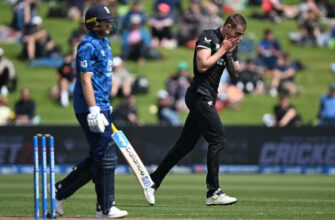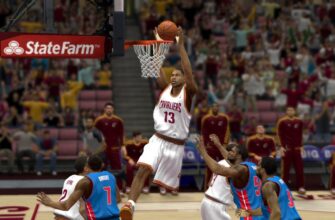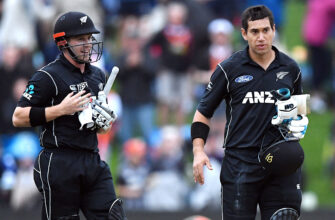The glittering night lights of the Singapore Grand Prix circuit typically illuminate tales of high-speed drama, strategic masterclasses, and driver heroics. Yet, this year, the initial spotlight has fallen not just on scorching lap times, but on the granular world of technical regulations, where even a few millimeters can dismantle a team`s meticulously crafted weekend aspirations. Williams Racing found itself at the sharp end of this unforgiving reality, as both its cars were abruptly disqualified from Saturday`s qualifying session due to a Drag Reduction System (DRS) infringement.
The Unwelcome Discovery: A Technical Scrutiny
Following a qualifying performance that saw Alex Albon secure a respectable 12th position and Carlos Sainz follow closely in 13th, the team was poised for a challenging but potentially points-scoring Sunday race. The atmosphere, however, shifted dramatically when post-session scrutineering by the FIA – Formula 1`s vigilant governing body – uncovered a critical deviation. The adjustable flap on the rear wings of both Williams FW47s was found to open beyond the maximum permissible limit of 85 millimeters.
In a sport where precision is paramount and the rulebook is gospel, this revelation triggered an immediate and severe consequence: a double disqualification. This means both Albon and Sainz, despite their efforts in qualifying, will now be relegated to start the Singapore Grand Prix from the very back of the grid. What was already set to be an uphill battle on the notoriously challenging street circuit has now transformed into a monumental climb, a testament to the unforgiving nature of F1`s technical rulebook.
DRS Explained: A Double-Edged Sword in Aerodynamics
For those uninitiated, the Drag Reduction System (DRS) is an ingenious, albeit occasionally contentious, element of modern Formula 1 car design. Primarily engineered to aid overtaking, it allows drivers, under specific conditions (usually when within one second of the car ahead in designated detection zones), to flatten a portion of their rear wing. This action dramatically reduces aerodynamic drag, leading to a significant surge in top speed on straights. During qualifying, DRS is permitted in these designated zones without the one-second rule, offering a crucial, lap-time-boosting advantage.
However, this performance benefit comes with stringent parameters. The rules are explicit: the maximum opening between the main plane and the adjustable flap of the rear wing is capped at 85mm. Any deviation, however minuscule, is considered a direct breach of the technical regulations. In the high-stakes world of F1, such rules are not suggestions; they are the bedrock upon which fair competition is built, and they are enforced with uncompromising rigor.
“During post-qualifying scrutineering, the rear wing of the car was found to be noncompliant with the Technical Regulations,” stated the official stewards` report. “The DRS in the state of deployment exceeded the maximum limit of 85 mm on both sides of the rear wing outer area.” The meticulous measurement by FIA officials revealed a larger gap than permitted, a fact the competitor ultimately acknowledged without contesting.
Williams` Stance and the Grueling Road Ahead
James Vowles, Williams team principal, swiftly addressed the incident, emphasizing that the infringement was unintentional and certainly not an attempt to gain an unfair advantage. He highlighted that the team`s internal pre-qualifying checks had indicated the components were within tolerance. “At no point were we seeking a performance advantage,” Vowles affirmed, while unequivocally acknowledging full acceptance of the FIA`s ruling. “There is only one measurement that matters, and we fully accept the FIA ruling.”
Such statements, while entirely understandable, underscore the relentless technical tightrope that F1 teams must navigate. Even with the most meticulous internal processes and state-of-the-art equipment, the minute differences between a team`s calibration and the FIA`s official, often microscopic, measurements can lead to devastating penalties. It serves as a potent reminder that engineering perfection is not merely a goal in Formula 1; it is an absolute and non-negotiable necessity.

For Williams, a team currently battling fiercely for every precious point in the Constructors` Championship, this double disqualification represents a significant and disheartening setback. The Singapore street circuit, renowned for its demanding nature, tight corners, and notoriously limited overtaking opportunities, presents an even tougher challenge when starting from the absolute rear. However, the resilient spirit inherent in Formula 1 dictates that the race is truly never over until the checkered flag falls.
The team has promptly committed to an urgent internal investigation to prevent any recurrence of such an error, a standard and critical procedure in a sport that constantly pushes the boundaries of performance while simultaneously adhering to extraordinarily stringent guidelines. This incident serves as a stark, somewhat ironic, reminder: in the pinnacle of motorsport, the line between innovation, a slight measurement inaccuracy, and outright infringement is often measured in fractions of a millimeter, and the consequences are invariably absolute.
As the lights prepare to go out on Sunday evening, all eyes will undoubtedly be on Williams to see if they can somehow conjure a memorable charge through the congested field, perhaps transforming a costly technical misstep into a compelling testament of driver skill and strategic brilliance. Or, perhaps, this will simply stand as a profoundly expensive lesson, meticulously measured and forever etched into the team`s operational playbook as a stark reminder of F1`s unforgiving precision.






